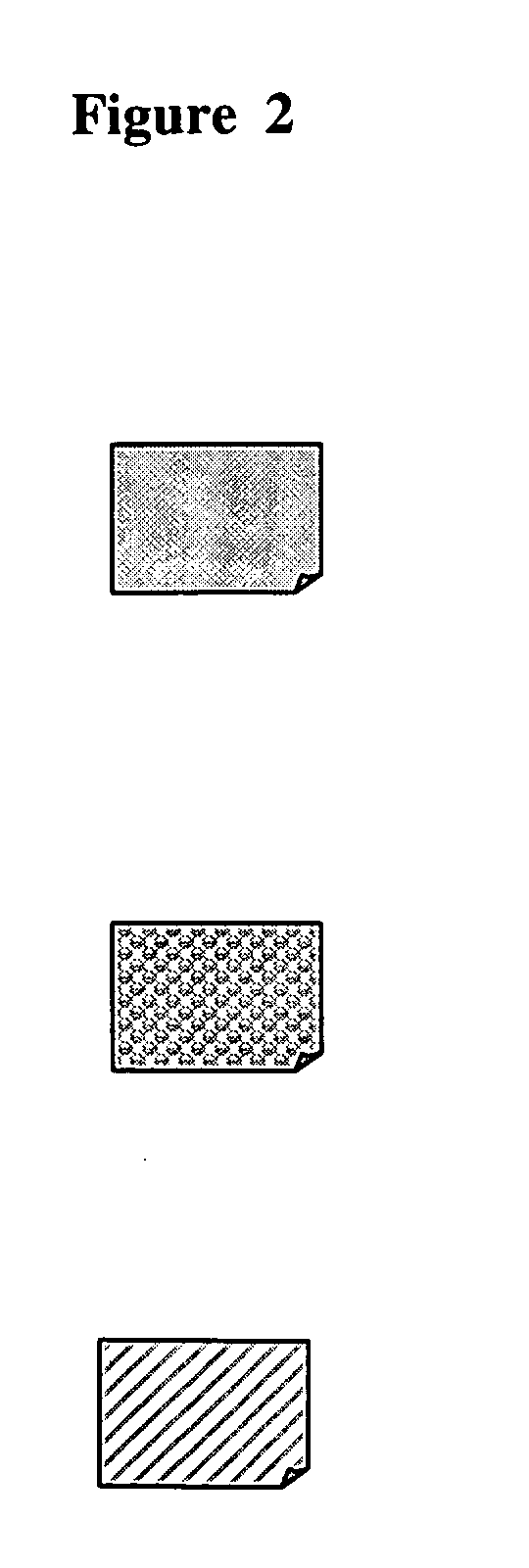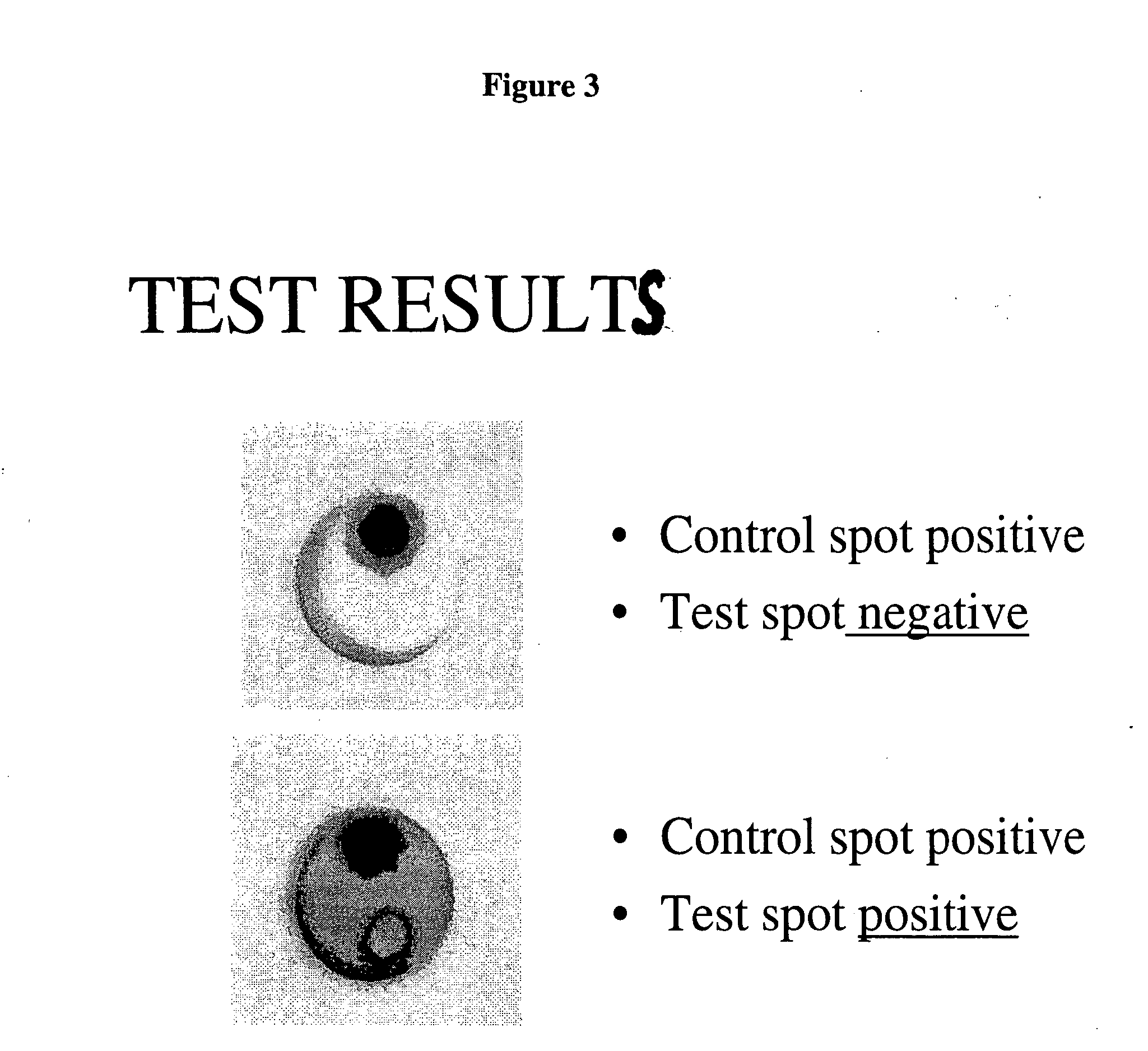Novel field testing method and device for detection of equine protozoal myeloencephalitis
a protozoal and myeloencephalitis technology, applied in the field of field testing methods and devices for detection of equine protozoal myeloencephalitis, can solve the problems of insufficient understanding of the disease, insufficient use of diagnostic tests, and inability to achieve significant understanding, diagnosis and treatment of the diseas
- Summary
- Abstract
- Description
- Claims
- Application Information
AI Technical Summary
Benefits of technology
Problems solved by technology
Method used
Image
Examples
Embodiment Construction
[0057] The present invention provides a fast field test method for the diagnosis of many pathogens, specifically, protozoa, viruses, bacteria and nematodes and more specifically, S. neurona, which can be operated by someone with no special training or technical knowledge. The test method is a simple membrane-capturing assay that can be used in the field to detect the presence of S. neurona induced antibodies in body fluids such as blood, plasma, serum, urine, cerebrospinal fluid, tissue extracts and saliva, within about 3 to 5 minutes. One preferred embodiment of the invention is specifically directed to an immunologic method for the protozoa, S. neurona, by detecting antibodies present in the blood or serum of the infected animal, using a commercially available vaccine as the antigen therefor.
[0058] The present invention also provides a test device that utilizes antigens from killed S. neurona immobilized on a suitable support such as a nitrocellulose membrane. The antigens in the...
PUM
 Login to View More
Login to View More Abstract
Description
Claims
Application Information
 Login to View More
Login to View More - R&D
- Intellectual Property
- Life Sciences
- Materials
- Tech Scout
- Unparalleled Data Quality
- Higher Quality Content
- 60% Fewer Hallucinations
Browse by: Latest US Patents, China's latest patents, Technical Efficacy Thesaurus, Application Domain, Technology Topic, Popular Technical Reports.
© 2025 PatSnap. All rights reserved.Legal|Privacy policy|Modern Slavery Act Transparency Statement|Sitemap|About US| Contact US: help@patsnap.com



